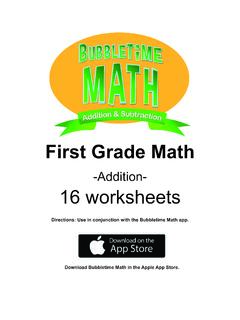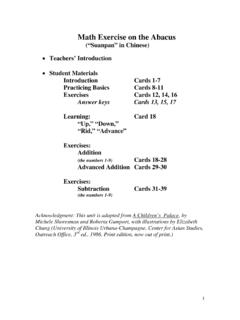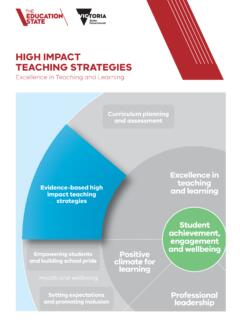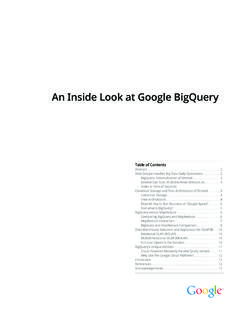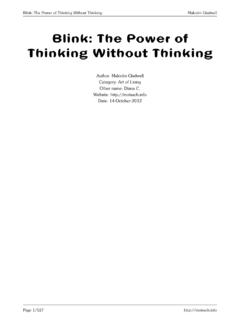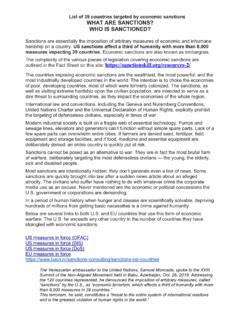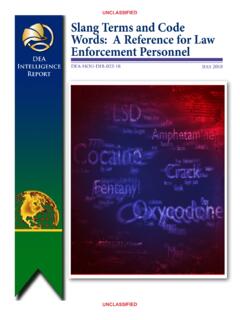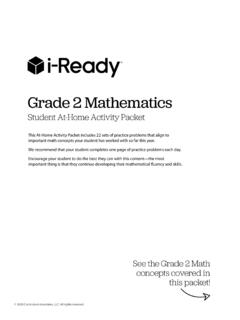Transcription of Abstract - arxiv.org
1 YOLO9000:Better, Faster, StrongerJoseph Redmon , Ali Farhadi University of Washington , Allen Institute for AI introduce YOLO9000, a state-of-the-art, real-timeobject detection system that can detect over 9000 objectcategories. First we propose various improvements to theYOLO detection method, both novel and drawn from priorwork. The improved model, YOLOv2, is state-of-the-art onstandard detection tasks likePASCALVOC and COCO. Us-ing a novel, multi-scale training method the same YOLOv2model can run at varying sizes, offering an easy tradeoffbetween speed and accuracy.
2 At 67 FPS, YOLOv2 mAP on VOC 2007. At 40 FPS, YOLOv2 gets , outperforming state-of-the-art methods like Faster R-CNN with ResNet and SSD while still running significantlyfaster. Finally we propose a method to jointly train on ob-ject detection and classification. Using this method we trainYOLO9000 simultaneously on the COCO detection datasetand the ImageNet classification dataset. Our joint trainingallows YOLO9000 to predict detections for object classesthat don t have labelled detection data.
3 We validate ourapproach on the ImageNet detection task. YOLO9000 mAP on the ImageNet detection validation set despiteonly having detection data for 44 of the 200 classes. On the156 classes not in COCO, YOLO9000 gets mAP. ButYOLO can detect more than just 200 classes; it predicts de-tections for more than 9000 different object categories. Andit still runs in IntroductionGeneral purpose object detection should be fast, accu-rate, and able to recognize a wide variety of objects. Sincethe introduction of neural networks, detection frameworkshave become increasingly fast and accurate.
4 However, mostdetection methods are still constrained to a small set of object detection datasets are limited comparedto datasets for other tasks like classification and most common detection datasets contain thousands tohundreds of thousands of images with dozens to hundredsof tags [3] [10] [2]. Classification datasets have millionsof images with tens or hundreds of thousands of categories[20] [2].We would like detection to scale to level of object clas-sification. However, labelling images for detection is farmore expensive than labelling for classification or tagging(tags are often user-supplied for free).
5 Thus we are unlikelyFigure 1 can detect a wide variety ofobject classes in [ ] 25 Dec 2016to see detection datasets on the same scale as classificationdatasets in the near propose a new method to harness the large amountof classification data we already have and use it to expandthe scope of current detection systems. Our method uses ahierarchical view of object classification that allows us tocombine distinct datasets also propose a joint training algorithm that allowsus to train object detectors on both detection and classifica-tion data.
6 Our method leverages labeled detection images tolearn to precisely localize objects while it uses classificationimages to increase its vocabulary and this method we train YOLO9000, a real-time ob-ject detector that can detect over 9000 different object cat-egories. First we improve upon the base YOLO detectionsystem to produce YOLOv2, a state-of-the-art, real-timedetector. Then we use our dataset combination methodand joint training algorithm to train a model on more than9000 classes from ImageNet as well as detection data of our code and pre-trained models are available on-line BetterYOLO suffers from a variety of shortcomings relative tostate-of-the-art detection systems.
7 Error analysis of YOLO compared to Fast R-CNN shows that YOLO makes a sig-nificant number of localization errors. Furthermore, YOLOhas relatively low recall compared to region proposal-basedmethods. Thus we focus mainly on improving recall andlocalization while maintaining classification vision generally trends towards larger, deepernetworks [6] [18] [17]. Better performance often hinges ontraining larger networks or ensembling multiple models to-gether. However, with YOLOv2 we want a more accuratedetector that is still fast.
8 Instead of scaling up our network,we simplify the network and then make the representationeasier to learn. We pool a variety of ideas from past workwith our own novel concepts to improve YOLO s perfor-mance. A summary of results can be found in Table normalization leads to sig-nificant improvements in convergence while eliminating theneed for other forms of regularization [7]. By adding batchnormalization on all of the convolutional layers in YOLOwe get more than 2% improvement in mAP. Batch normal-ization also helps regularize the model.
9 With batch nor-malization we can remove dropout from the model Resolution state-of-the-art detec-tion methods use classifier pre-trained on ImageNet [16].Starting with AlexNet most classifiers operate on input im-ages smaller than256 256[8]. The original YOLO trainsthe classifier network at224 224and increases the reso-lution to448for detection. This means the network has tosimultaneously switch to learning object detection and ad-just to the new input YOLOv2 we first fine tune the classification networkat the full448 448resolution for 10 epochs on gives the network time to adjust its filters to work betteron higher resolution input.
10 We then fine tune the resultingnetwork on detection. This high resolution classificationnetwork gives us an increase of almost 4% With Anchor predictsthe coordinates of bounding boxes directly using fully con-nected layers on top of the convolutional feature of predicting coordinates directly Faster R-CNNpredicts bounding boxes using hand-picked priors [15]. Us-ing only convolutional layers the region proposal network(RPN) in Faster R-CNN predicts offsets and confidences foranchor boxes.
![arXiv:0706.3639v1 [cs.AI] 25 Jun 2007](/cache/preview/4/1/3/9/3/1/4/b/thumb-4139314b93ef86b7b4c2d05ebcc88e46.jpg)

![arXiv:1301.3781v3 [cs.CL] 7 Sep 2013](/cache/preview/4/d/5/0/4/3/4/0/thumb-4d504340120163c0bdf3f4678d8d217f.jpg)
![@google.com arXiv:1609.03499v2 [cs.SD] 19 Sep 2016](/cache/preview/c/3/4/9/4/6/9/b/thumb-c349469b499107d21e221f2ac908f8b2.jpg)






